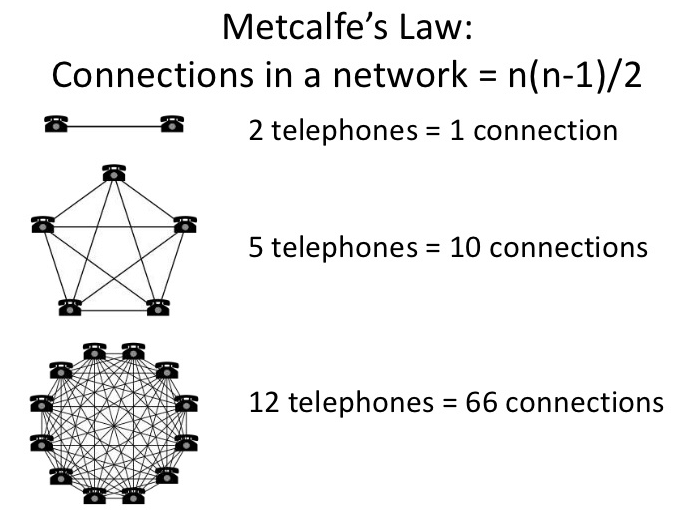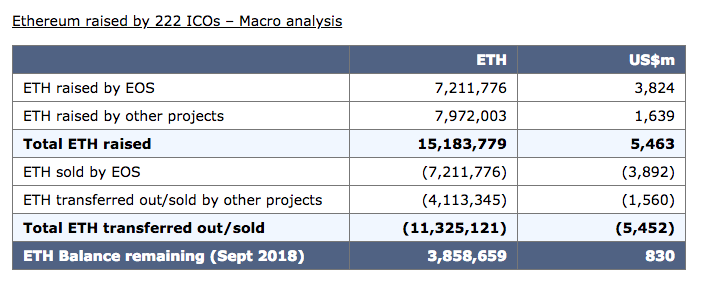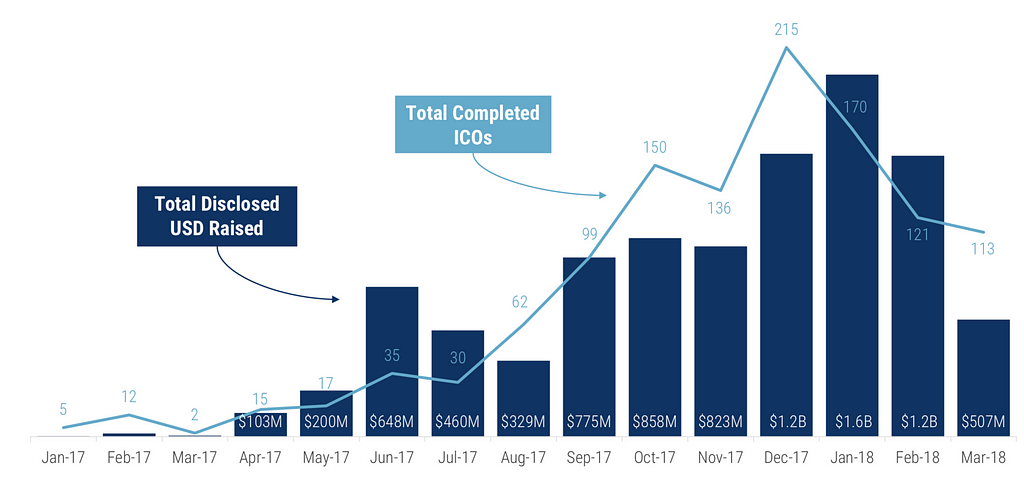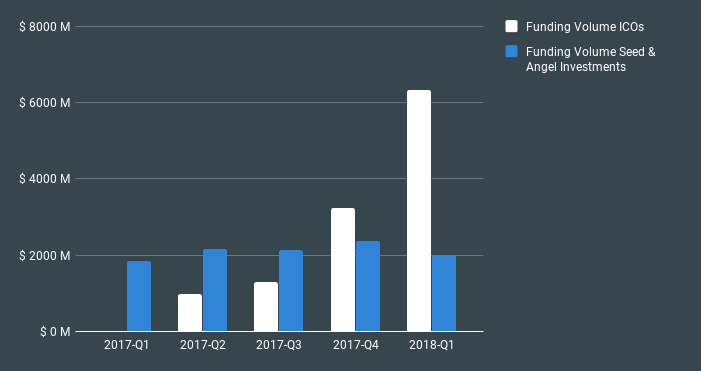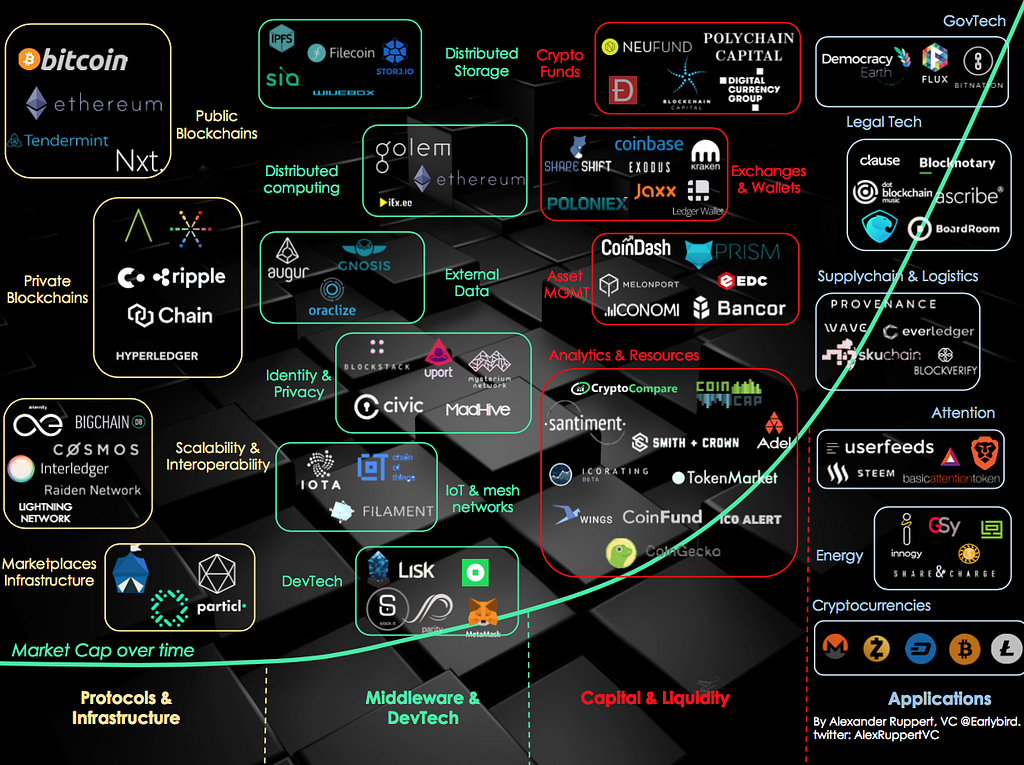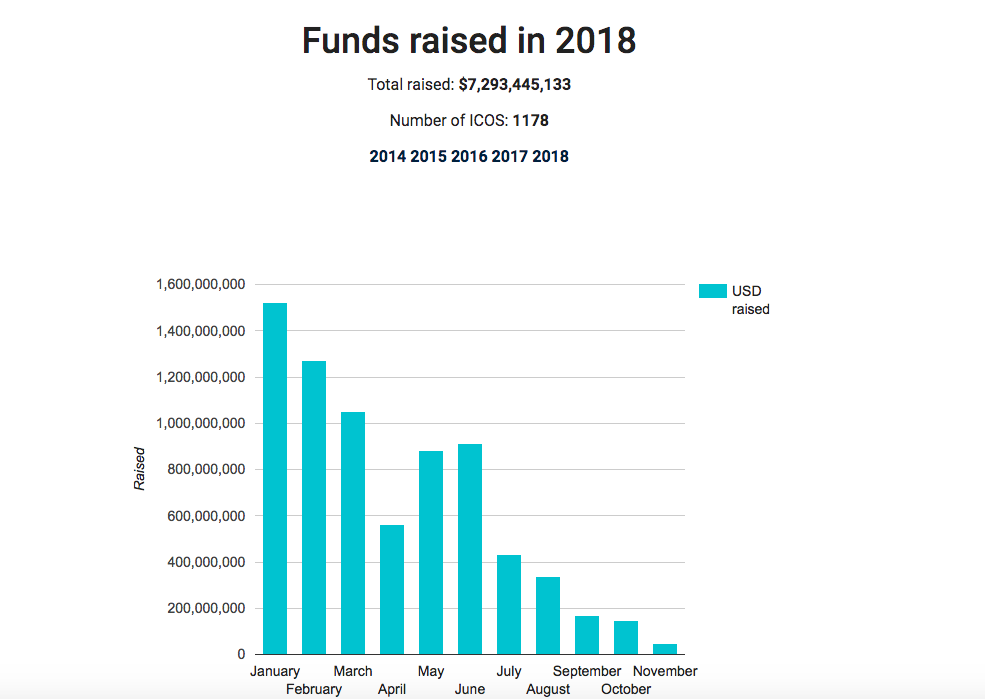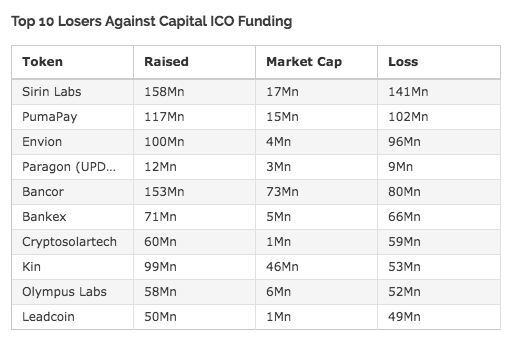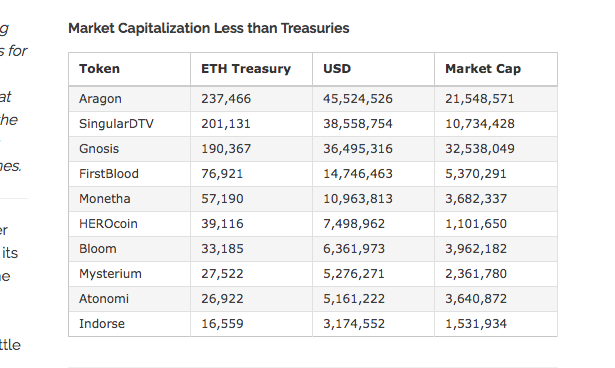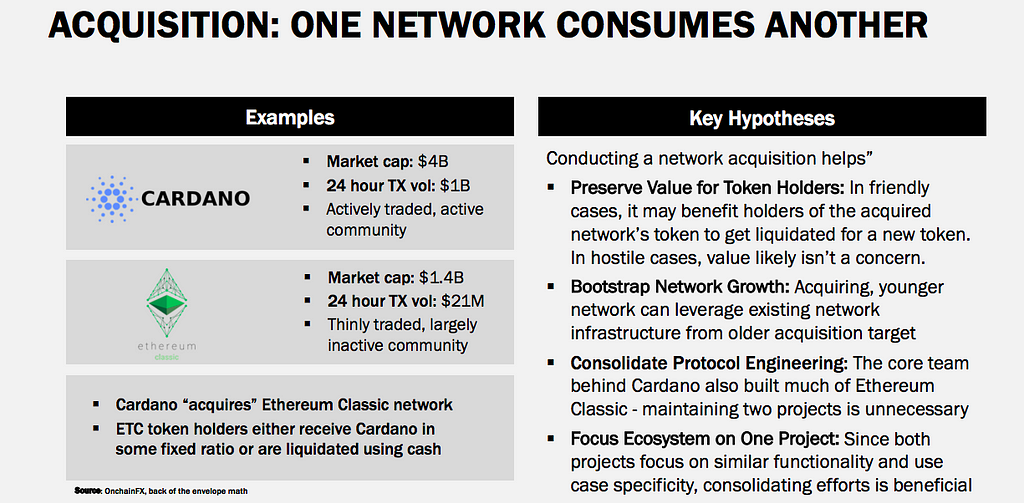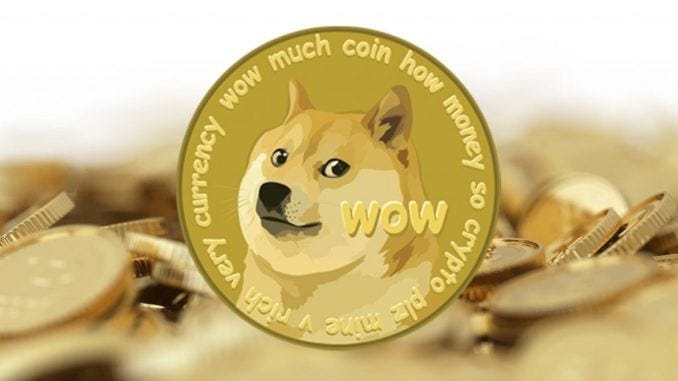Latest news about Bitcoin and all cryptocurrencies. Your daily crypto news habit.
Presenting a Framework for Friendly Crypto Token M&A
 M&A: An essential mechanism for optimizing network effects
M&A: An essential mechanism for optimizing network effects
Note: After writing this initial draft, I came across Andy Brombergs post from July that I think is a great complement to the concepts I delve into here.. The link to his article is here.
Introduction
When I first began researching this piece it quickly became clear to me that the idiosyncrasies of the ICO bubble and dApp network architectures in general make the market value add of mergers particularly potent when compared with traditional takeovers / M&A in the equity market. As a result, the rapid development of a systematic decentralized network token merging approach appears all the more urgent.
It is important to emphasize that any merger between two competing token projects if at all possible should be an amicable one. The value gained by combining networks, a figure classically derived from Metcalfe’s law, is roughly equal to the number of people participating in the network squared (particularly as n gets very large).
It follows that the attrition rate of the users in the merging network may in large part be contingent on the merger itself being amicable. There is little space for classic hostile takeovers in this paradigm given the fragility of communities and the low barriers to entry in an industry defined by a commitment to open source.
A critical as well as obvious feature of the ICO bubble period was the correlation between the price of Ethereum and Bitcoin with the US dollar equivalent size of ICOs. It is important to highlight this positive correlation because funds raised originally in crypto by ICOs during the peak valuation period were by and large subsequently sold for fiat. As a result, this subsequent and often immediate conversion by many (but not all) ICO teams served as a de-facto cryptocurrency market short sell.
Since the volume of ICO funding is highly correlated with the price of Bitcoin and Ethereum, the magnitude of these “shorts” were determined causally by their proximity to the optimal time to execute a short (i.e. at the very top of the market).
Let me carry the short-selling analogy a little further because it has important implications on the merger model described below. For rational ICO contributors, it is necessary to assume that at the time of their contribution to an ICO they believed the following to be true:
- The token generated by the ICO contract served as an effective proxy for the value of its requisite network.
- ICO proceed spending would drive more value to the network (i.e. to the value of the token) relative to the amount spent. In other words, for every $1 spent, the ICO contributors had to feel confident they would realize at least a $1 gain in net present value token market cap valuation on average.
Based on these assumptions, a central characteristic of a quality merger candidate is a high ratio of liquid asset value (which typically consists entirely of ICO proceeds) to the current token market valuation. In other words, an ICO that raised $30 million dollars in June 2018 but as of November had a token valuation of just $3 million dollars would have a ratio of 10 (technically just under 10 after factoring in 5 months of capital burn). As a general rule, a higher ratio is preferable (monotonic) when it comes to selecting merger candidates.
The interpretation of this ratio, I claim, is the degree to which token holders have lost faith in the efficacy of capital to drive network growth since the date of the ICO. Adding in appropriate controls such as whether the team did in fact convert to fiat subsequent to raising; the degree to which the ratio is greater than “1” gives a sense of how much the market has lost faith in the networks ability to grow in value relative to capital input based on their post ICO observation of the networks actual response to capital input. In most cases, this is a reflection of the teams themselves and the markets belief in their ability to grow the network. This is particularly true at the pre-launch phase where the team is entirely responsible for development.
Given this setup, if we take two networks competing in the same vertical where one has a significantly higher ratio than the other, it follows the higher ratio team is best served by merging with the lower ratio team. The actual mechanism of the merging is described in detail below and the theoretical results imply an enormous net benefit for every group involved in the transaction.
In Numbers: The Magnitude of the ICO Bubble
Q4 of 2017 through Q2 of 2018 saw a total capital allocation to ICOs (initial coin offerings) of $10 billion. Global angel and seed stage investing by comparison totaled $9 billion for the same period spread across over 13,000 deals, or just under $700k a check. In contrast, the average ICO deal size came out to roughly $20 million.
Taking the quotient of the per deal sizes of ICOs vs traditional angel or seed ($20,000,000 ÷ $700,000), and multiplying by a hundred to convert to a percent, we find that an early stage startup raising via token sale ended up nearly 3000 % over capitalized when compared with a startup that raised via traditional early stage equity financing. Shockingly, this doesn’t even factor in the reality that many startups who conducted ICOs raised equity capital in addition to the proceeds from their token offering.
Controlling for founder dilution level, stage of development (or lack there of), and experience of the founding team, there is very little reason why companies raising with a token deserved a valuation nearly 3000 % greater than that of a company without a token.
Retrospectively, it seems clear this 3000 % difference in per deal financing was the result of an enormous investment bubble resulting in a short but vicious period of misallocation of investment capital to teams who had no business renting a wework let alone 50th floor office space on madison avenue.
That being said, there are some fundamental differences in the valuation models for tokens as opposed to equity that at least partially explains the discrepancy, bubble aside. Most importantly, the value of a token economy is subject to a winner-take-all effect due to the exponential nature of returns to network growth mentioned in the introduction.
The relatively tiny number of successful ICOs (~500) vs. successful seed offerings (~13,000) over this period implies valuations for ICOs reflected the markets expected value of a given token economy capturing the entirety of a massive, say, 5-billion dollar token market with a relatively low probability of success, say, 1 %. Assuming the average percentage of total tokens sold in the ICO was 40% this backs out our $20 million average deal size number cited earlier. This methodology is reasonable considering the winner-take-all property of tokenized applications described above, since in the long term only one token economy will win for any given vertical.
The below graphic serves as a rather crude but still effective illustration of some key verticals and the current state of competition in each. As is clear, substantial consolidation remains to occur due to the degree of competition remaining intra-use case.
A flawed yet often cited reason for the extremely high capitalization of ICO projects is that it is technically difficult to conduct a second ICO without destroying the tokens from your first ICO. So instead of raising follow on capital after hitting certain development milestones as is done in traditional equity financing, high valuations were rationalized as a way to finance the project to self-sustainability in one shot. In reality, teams often retain a high percentage (sometimes as high as 90 %) of the total token supply following the ICO. As a result, follow on offerings occur regularly despite a lack of a direct token dilution mechanism.
Why now?
Since the end of Q2 of 2018, the rate of ICO funding has dropped off a cliff. In October, the market saw a mere $105 million raised via ICO, down from $1.5 billion in January of this year. A 90+ % decline on a per month basis in less than a year.
This decline in new capital allocation closely parallels decline in existing token valuations, many falling by over 90% with some down as much as 99% from their winter highs. This dramatic drop in valuation following a period of extravagant fundraising designed to cover long term needs leaves literally hundreds of companies with token economies valued at a fraction of the financial assets of the company itself.
Let’s take a theoretical example:
Earlier this year, company A raised $30 million at a $75 million total valuation. Just 6 months later the value of “A” tokens have fallen to under 8 % of their initial offering price. Resulting in a total valuation of just $6 million for the entire token economy ($69 million in lost value in 6 months).
Let’s say company A employs about 15 full time people, only half of which are engineers making 6-figure salaries with some portion of their compensation coming via tokens, reducing the cash burn rate. Given labor is their main operating expense, we can conservatively assume they burned through $2 million of the $30 million it raised 8-months ago. Let’s assume company A sold 60 % of their tokens in their ICO. If we take the cash added together with the value of the 60 % of the total token supply they retained, the value of their overall financial assets comes to around $32 million, $28 million of which is in cash.
The value of company As cash alone is nearly 500 % greater than the value of the entire “A” token economy! An absolute gap of $29 million when considering the value of the token circulating supply, which is valued at just under $3 million.
Company A is not an idiosyncratic case. Running the numbers, there are over 150 ICO teams with cash balances greater than 300 % in excess their total token economy market value. When considering circulating supply alone the asset value ratio increases still further.
Given the tentative legal nature of tokens the pervasive presence of large ratios of company assets to their respective token economy valuations is not abrasively unintuitive. Tokens are not in and of themselves an express right to a pro-rata portion of the issuing entity resources. The token value is, however, a literal prediction market indicator of the likelihood that the decentralized application using said token will capture 100 % of its given market share. Given the nature of networks described earlier, this is a prediction on a binary outcome, with possible outcomes defined as follows 1. Capture 100% of the market 2. Lose completely resulting in worthless tokens.
High Level Strategy Description and Rationale
Given the early state of token powered decentralized applications (dApps), there are still often many teams with dApps competing in the same market. Inevitably, consolidation will occur as clear winners emerge among competitors with similar use cases. This consolidation could play out in a couple of ways:
1. Teams drop out of the competition by simply running out of money or abandoning their efforts, often far later than would have been rational due to cognitive confirmation bias of team members.
2. Teams engage in buyout mergers converting the cash reserve of the inferior project to an equivalent value of token share in the formerly competing token. Investors in the inferior project are allocated the pro-rata cash reserve equivalent value of their original holdings denominated in the superior projects token. As long as the cash reserves of the inferior project at the time the buyout occurs exceeds their corresponding circulating token valuation, all four groups end up better off.
The central thesis of the merger approach is to optimize network effects across competitors improving financial outcomes for both teams and both investor groups. This results in a pareto-optimal outcome, in effect, an economic “no-brainer”.
Econometrics
I will now define a general indicator that will estimate in general the degree to which a given team is over capitalized vs. its actual likelihood of winning in its market. This indicator will serve as one important way of identifying good candidates for merging with a competitor.
To calculate this indicator:
1. We will define a variable that indicates whether the ICO was conducted at or near the top of the speculative bubble in crypto asset prices (we can call this the “pump” index). The pump index is a dummy variable value with a value of 1 if the ICO occured in December of 2017 or Q1 (Jan. 1 → March 31st) of 2018, pump is equal to 0 otherwise. Each of these months had at least $1B in ICO investment.
2. We calculate the ratio of each company’s current liquid financial capital with their circulating token economy valuation. This will be our dependent variable (we can call this the “value” index), or in other words, this is the variable we are interested in as a basis for a merger candidate.
3. We create a variable to calculate the effect on the Value indicator of the length of time since the ICO occured (we can call this “burn” (which is an integer value equal to the number of months since the ICO)). Burn has a negative connotation of money spent, but it is also an indicator of the time spent on development and / or app user growth. “Burn” should have a slight negative covariance with “pump” since more ICOs occurred following January 1st resulting in some multicollinearity. But this only increases the variances slightly and shouldn’t affect results significantly (need to test to verify, would be good to creatively combine these indicators).
4. Define the variable “dilution” to be the percentage of the tokens the team sold in their offering. This is an integer value between 0 and 100 (a value of 100 indicates that 100 % of tokens were sold to investors in the ICO).
5. Define the variable “major” to be a dummy var with value = 1 if raise exceeded $20mn and 0 if amount raised was under $20mn.
We then run an OLS regression with the Value indicator as our dependent variable and with “i” = individual companies. If we wish to control for company market type (i.e. control for company’s that aren’t competing directly), we can do so by adding a dummy variable for each market group, with the dummy variable for “i”s market group set to 1 and all others set to 0.
Finally, we omit the constant term because all companies in dataset conducted ICOs so dillution_i and burn_i will never equal zero. There are obviously many variables omitted, such as location of team, size of the raise itself, team factors, high profile investors, etc etc. These are important but omitted for now for brevity. The betas in the below equation will be capturing omitted variable effects and so will overrepresent their actual, direct effect as a result of the OVB.
The regression equation:
Value_i = Beta_0*burn_i + Beta_1*dilution_i + Beta_2*pump_i + Beta_3*major_i + error_i
Breaking this down in english, what Value_i tells us is the ratio of cash reserves to the circulating token economy valuation for company “i”,
Explanation of variables
The Beta coefficients are important for distinguishing between the companies with equal or similar Value indicators and provide quantitative evidence for the relative effect of various idiosyncratic company factors on the Value variable.
What Beta_0 tells us is the percentage point difference that one can expect in the Value ratio when the length of development / additional month of cash burn is incremented for a given company “i”. A positive Beta_0 tells us that for any company, the monthly rate at which their token economy is losing valuation relative to burning cash on an absolute basis (may be useful to look at relative rates also).
One way of looking at this is if burn_i is a low number and Beta0 is very large and positive, then the ICO may be ripe for acquisition because it is has not gone through much of its ICO proceeds and yet it is clear that the project is not meeting investor expectations and is losing token valuation rapidly.
Beta_1 tells us the relative effect of a greater percentage of tokens sold in company i’s ICO on its Value index. A positive Beta_1 indicates that a marginal increase in the percentage of tokens sold in the ICO also increases the ratio of cash reserves to circulating token valuation. As dillution_i increases we can expect cash to go up (more tokens sold) and relative token valuation should also increase (for non-zero token value since more tokens are now circulating).
A large magnitude positive Beta_1 tells us that a large drop occurred in the token valuation relative to the cash reserves. Beta1 is a key variable of interest here because it is essentially a relative indicator of how overvalued the company was at the time it raised vs. now (which is arguably an indirect measure of the execution ability of team, particularly since we control for “pump_i”).
Beta_2 is our indicator of how conducting the ICO during the top of the market affects the current value ratio. Beta2 tells us the percentage point change in Value_i if pump = 1 vs. when pump = 0. Or the percentage point effect on Value_i of conducting an ICO at the top of the bubble. Essentially, Beta_2 is the premium investors paid during the peak bubble months, holding the all other vars constant, isolating the collective psychology and sentiment effect. Beta_2 may also pick up some variation in the types of projects that raised during pump months not controlled for in the rest of the independent variables.
Beta_3 represents the effect that raising a large amount of money in the ICO has on cash reserve divided by circulating token valuation (the same Value_i variable), Beta_3 will be positive if ICOs that raised greater than $20mn performed worse vs. amount spent than ICOs that didn’t and the magnitude of Beta_3 will tell us the effect size of the difference in performance relative to the amount spent by the team following the ICO.
Another way to look at it is Beta_3 captures the “effectiveness of funds spent by team into actual token valuation” by small vs. large ICO teams. Beta_3 is the return on invested capital back to investors effect for large vs. small teams.
Conclusion
First off, congrats for making it this far! I really appreciate anyone who takes an interest in anything I write, so thank you.
To close, I want to reiterate that the goal of this piece is to highlight the potential upsides of amicable mergers in the token space. Further research needs to be done in terms of working through the mechanical steps for executing the merger. Inevitable issues such as a split occurring within an organizations founding team, alongside a whole host of messiness that invariable arises when egos and human systems try to work out complex deals.
Much remains to be seen, but I am very optimistic about the role mergers can play in rapidly accelerating the rate of innovation in the space. Ultimately, my goal is to do everything I can to drive real value added use cases that are founded on the principles and technical infrastructure of blockchain technology, I believe this is one facet that can move us all towards that realizing goal much faster.
Proposing a Framework for Friendly Crypto Token Mergers was originally published in Hacker Noon on Medium, where people are continuing the conversation by highlighting and responding to this story.
Disclaimer
The views and opinions expressed in this article are solely those of the authors and do not reflect the views of Bitcoin Insider. Every investment and trading move involves risk - this is especially true for cryptocurrencies given their volatility. We strongly advise our readers to conduct their own research when making a decision.
